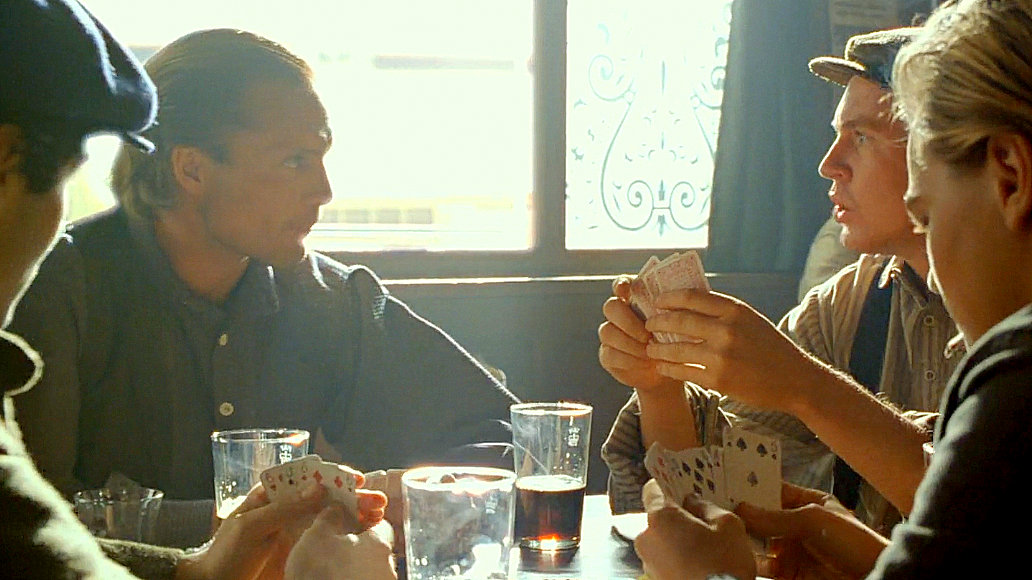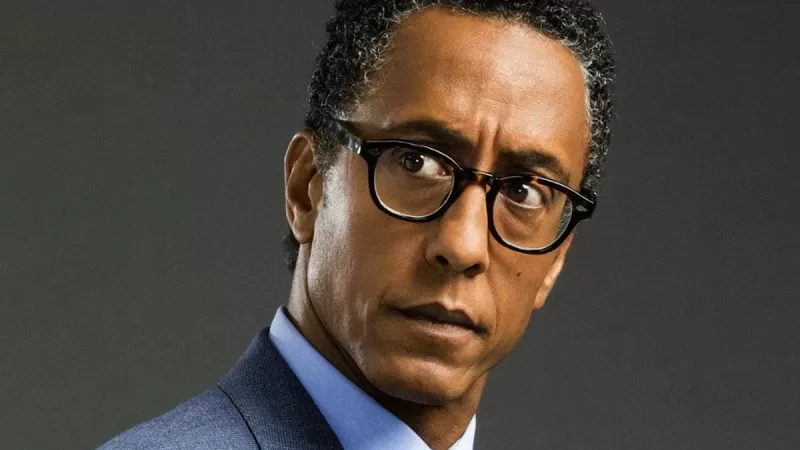
Oladapo Bamidele (February, 24, 2024)
Unveiling the Mastery: Bluffing Insights from Iconic Movie Villains
In the mysterious world of cinema, iconic movie villains have long captured our imaginations with their enigmatic personas and strategic prowess. We ought to take lessons from these iconic movie villains. From the chilling intellect of Hannibal Lecter to the deceptive charm of the Joker, these antagonists have not only left an indelible mark on the silver screen but also imparted invaluable lessons on the art of bluffing and manipulation.
As we delve into the intricacies of these nefarious characters, we uncover a trove of insights into the psychology of deception and the intricate maneuvers of strategic gameplay. Through their calculated actions and cunning dialogues, these iconic villains offer a compelling study in the craft of bluffing, shedding light on the nuanced tactics employed to outmaneuver adversaries and seize control of pivotal situations. So, these are lessons from iconic movie villains that we can learn for everyday life.
The allure of mastering the art of bluffing is not confined to the realms of fiction; rather, it resonates with the complexities of human interaction and the strategic maneuvers essential in various aspects of life. Whether navigating high-stakes negotiations or engaging in tactical decision-making, the lessons gleaned from iconic movie villains serve as a compelling source of wisdom in understanding the power of deception and the strategic acumen required to outwit opponents.
Join us as we embark on a riveting exploration of the captivating world of iconic movie villains, unraveling the intricate tapestry of bluffing, and glean invaluable lessons from these enigmatic characters that continue to captivate audiences worldwide.
Understanding the Psychology of Bluffing
Bluffing is a psychological strategy used in various aspects of life, from movie villains, business negotiations to poker games. Understanding the psychology behind bluffing gives insight into the power of perception and the role emotional intelligence plays in reading opponents.
The Power of Perception
The success of a bluff often hinges on the perception of the bluffer by the opponent. Building a strong and credible persona is crucial in bluffing and that’s one obvious lesson from iconic movie villain that we can learn. One’s image and behavior during a bluff heavily influence how others perceive the bluffer’s credibility. Developing a convincing persona that aligns with the desired bluff is essential for its success. As research from Psychology Today suggests, expectations of the emotional aftermath can co-determine whether a player attempts to bluff and whether the opponent challenges the move.

Emotional Intelligence and Reading Opponents
Emotional intelligence is one of the pivotal lessons to learn from iconic movie villains in the art of bluffing. Successful bluffers possess the ability to read opponents’ emotions, non-verbal cues, and behavioral patterns. A trove of good lessons from iconic movie villains. This skill allows them to adapt their bluffing strategy to exploit opponents’ vulnerabilities. Research in the field of poker psychology, as mentioned in a discussion on Two Plus Two forum, emphasizes the significance of understanding opponents’ behavior and making successful reads, which can greatly influence the outcome of a bluff.
For a deeper understanding of the psychology of bluffing, it’s essential to consider the true value of bluffing in poker as detailed in this piece on PokerListings. The interplay of factors affecting bluffing and the influencing aspects provide valuable insights into the psychology behind the bluffing strategy.
Incorporating these psychological aspects into one’s approach to bluffing can enhance the effectiveness of the strategy, whether in a professional setting or a recreational game.
For further academic understanding, refer to “The Psychology of Bluffing” by T. Levine & J.G. Golson in the ‘Encyclopedia of Lying and Deception’ by Sage Publications.
Analyzing Iconic Movie Villains’ Bluffing Techniques
The lessons from iconic movie villains; movie villains often employ cunning and deceptive strategies, leaving audiences in awe of their ability to manipulate situations to their advantage. By studying their bluffing techniques, we can gain valuable insights into the art of persuasion and strategic manipulation.
Machiavellian Manipulation: Lessons from Key Villains
Villains like the Joker from “The Dark Knight” and Hannibal Lecter from “The Silence of the Lambs” give us many lessons from iconic movie villains. These two villain-characters showcase a mastery of Machiavellian manipulation. They adeptly utilize psychological manipulation and deception to achieve their goals, coercing others into unwittingly aiding their sinister agendas. Their ability to exploit vulnerabilities and sow chaos serves as a chilling reminder of the power of psychological manipulation. These is a value writers can carry as writing lessons from iconic movie villains.


Strategic Deception and Misdirection
From the cunning schemes of Keyser Söze in “The Usual Suspects” to the elaborate plots of Hans Gruber in “Die Hard,” strategic deception and misdirection play pivotal roles in the success of iconic movie villains. Their ability to craft intricate plans that deceive both characters and audiences alike serves as a testament to the effectiveness of strategic manipulation in achieving their nefarious objectives.
The Art of Maintaining Composure and Confidence
Villains such as Darth Vader from “Star Wars” and Agent Smith from “The Matrix” exhibit an unwavering composure and confidence that instills fear and commands authority. Their ability to exude an aura of unshakable confidence in the face of adversity is a testament to the psychological impact of maintaining a calm and imposing demeanor.
These iconic movie villains provide valuable lessons in the art of bluffing, offering insights into the psychology of manipulation and the strategic use of deception. By examining their tactics, we can learn to recognize and guard against similar tactics in real-life scenarios, gaining a deeper understanding of the complexities of human behavior and persuasion.
For further exploration of movie villains and their motivations, you can check out Another Top 10 Movie Villains with Understandable Motivations, which delves into the intriguing backstories of compelling antagonists.
Learning from Memorable Bluffing Moments in Movies
Movies have provided us with some of the most dramatic and unforgettable bluffing scenes, showcasing the art of deception at its finest. Whether it’s a high-stakes poker game or a tense negotiation, these iconic moments offer valuable lessons that can be applied to real-life situations.
Deconstructing Iconic Bluffing Scenes
The Power of Confidence
One of the key takeaways from memorable bluffing scenes in movies is the power of confidence. Characters like Keyser Söze in “The Usual Suspects” exude unwavering self-assurance, convincing their opponents through sheer presence and conviction. This teaches us that in real-life situations, projecting confidence can significantly influence the perception of others, making them more receptive to your bluff.
Reading Non-Verbal Cues
In films like “Casino Royale,” we witness how subtle non-verbal cues, such as facial expressions and body language, play a crucial role in successful bluffing. Learning to interpret these cues can be invaluable in real-world scenarios, allowing individuals to gauge the effectiveness of their bluff and make informed decisions based on the reactions of others.
Adapting Villains’ Bluffing Strategies to Real-Life Situations
Navigating Negotiations
In movies like “The Godfather,” we see masterful negotiation tactics infused with strategic bluffing. Understanding when to push for leverage and when to hold back is a skill that can be honed in real-life negotiations, enabling individuals to assert themselves while maintaining an element of controlled deception when advantageous.
Applying Emotional Intelligence
Villains often excel at manipulating emotions to further their agendas, a tactic exemplified in films like “The Dark Knight.” While this may not directly translate to real-life villainy, it does underscore the importance of emotional intelligence in bluffing. Being attuned to the emotions of others and using this awareness to shape the narrative can be a potent tool in various interpersonal interactions.


Incorporating the strategic elements as lessons from iconic bluffing moments can enhance our abilities. In turn these helps us in our own lives. Either to navigate diverse social or professional landscapes. Learning from the subterfuge of movie villains, we gain insights. Knowledge into the nuanced art of bluffing, empowering us to wield this skill responsibly and effectively in our daily interactions.
For further insights into the art of bluffing in movies, you can check out these related articles:
- Famous Movie Poker Scenes: Lessons in Bluffing and Strategy
- The 4 Best Poker Hands and Bluffs from Movies
- Analyzing the Strategic Role of Bluffing in Poker Films
- Which is the best movie which shows how to bluff in life?
- The Best Poker Movies and TV Shows to Watch and Learn From
Practical Tips for Mastering the Art of Bluffing
Mastering the art of bluffing is a nuanced skill that involves a careful balance of body language. Personalized style, and ethical considerations. Bluffing can be a powerful tool when used judiciously and skillfully. Here are some practical tips to hone your bluffing abilities.
Role of Body Language and Nonverbal Cues
Body language and nonverbal cues play a pivotal role in the effectiveness of a bluff. A confident posture, steady eye contact, and subtle gestures can convey a sense of authority and conviction. Conversely, fidgeting, avoiding eye contact, or nervous tics can undermine the credibility of a bluff. Understanding and controlling your body language is essential in projecting the desired image while bluffing. A lessons from iconic movie villains.


Developing a Personalized Bluffing Style
Developing a personalized bluffing style involves blending your natural demeanor with strategic enhancements. It’s important to recognize your strengths and leverage them in creating a convincing persona. Whether it’s adopting a specific tone of voice, or refining your storytelling abilities. Or using humor to disarm opponents, crafting a unique and authentic bluffing style can elevate your effectiveness in high-stakes situations.



Ethical Considerations and Responsibility in Bluffing
Bluffing can be a strategic tool. It is essential to consider its ethical implications. Plus the responsibility that come with it. Practicing ethical bluffing involves maintaining integrity and avoiding deceitfulness. Therefore, use bluffing as a means to an end, rather than as an end in itself. Be mindful of the impact of such bluffing on other people. Align it with ethical standards to maintain trustworthiness and credibility in the long run.


Embracing the Complexity of Bluffing in Real Life
The art of bluffing is not solely confined to the silver screen. But, it intertwines with our daily lives, albeit in subtler forms. Navigating this intricate web of bluffing and deception requires a deep understanding of emotional cues and interpersonal dynamics.
Navigating the Fine Line Between Bluffing and Deception
In real-life scenarios, bluffing often straddles a delicate boundary between ethical persuasion and deceit. The intent to understand the psychological underpinnings of bluffing is crucial. It provides an insight into the emotional intelligence required to discern subtle cues. According to a recent article on Psychology Today, successful and failed bluffs evoke potent emotional reactions. The result is that it emphasizes the intricate nature of navigating this terrain.
Bluffing as a Tool for Negotiation and Conflict Resolution
Bluffing can serve as a powerful tool in negotiation and conflict resolution. Especially when coupled with emotional intelligence. A study on Negotiation Mastery underscores the significance of empathy and rapport-building in navigating bluff-oriented situations. An good understanding of the emotional dynamics in a situation is key. An example is presented an The Atlantic article. This is vital for effectively leveraging bluffing techniques for mutually beneficial outcomes. This teaches good lessons from iconic movie villains


When embracing the complexity of bluffing in real life. It will become evident that emotional intelligence plays a pivotal role. It helps in discerning the nuances between ethical persuasion and manipulation. By honing this skill, individuals can leverage bluffing as a skill. They can navigate the balance between bluffing as a strategic tool and upholding integrity in interactions.
Conclusion
In conclusion, mastering the art of bluffing, as exemplified by iconic movie villains, offers valuable lessons for real-life scenarios. From carefully analyzing opponents to adapting strategies, these characters demonstrate the power of strategic finesse. Embracing the art of bluffing with integrity can empower individuals to navigate high-stakes situations with confidence and intelligence. As seen in our favorite films, bluffing can be a tool for success when wielded with skill and ethical consideration.
Did this press release inform you? Would you like to comment on “THE ARTICLE”? If you do, we would respond. Do let us know your thoughts if you have any suggestions. So hit us up on Facebook, Instagram! or Twitter.
INDIE ACTIVITIES
Escape by Howard J. Ford stars Sarah Alexandra Marks from Saban Now Out on VOD
Actress Sarah Alexandra Marks stars of a Saban action/thriller titled Escape
Andre Royo to Deliver Keynote Address at Beyond Hollywood Int’l Film Festival Awards Night
Andre Royo is at Beyond Hollywood Int’l Film Festival Release April 28th, 2024
CLODAGH Directed by Portia A. Buckley is an Official Selected Short at Cleveland
CLODAGH has been selected for the prestigious Cleveland International Film Festival
Stargazer by Alan McIntyre. A Spellbinding Tale of Science, Seduction and Betrayal Debuts April
Stargazer Gets Digital Debut for North American VOD Platforms and DVD on April 30, 2024
Day Labor by R. Ellis Frazier, Action Thriller Gets May Release
Freestyle Digital Media Acquires Action Thriller “Day Labor” For May Release






